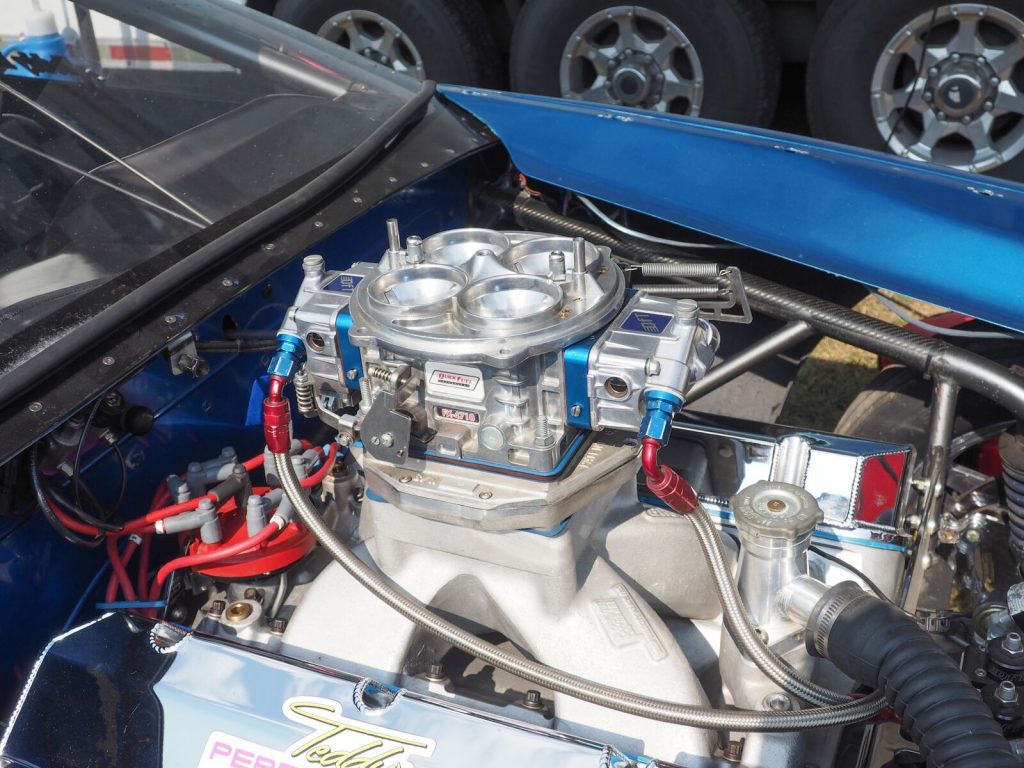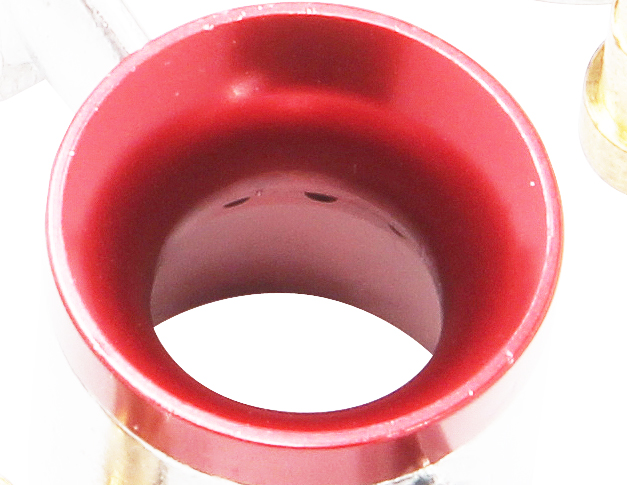To truly understand how carburetors work, you first have to know Daniel Bernoulli.
Bernoulli was an 18th century scientist who discovered that pressure is inversely proportional to velocity. This principle, called Bernoulli’s Principle, was originally applied toward fluid dynamics (think fuel flow vs. fuel pressure), but it also pertains to airflow. Specifically, as air speed increases, its pressure decreases.
Booster Basics
Carburetors are designed with Bernoulli’s Principle in mind. Air inlets, venturi design, and booster styles work in conjunction with one another to create the right balance of airflow and velocity for a given application. For example, larger venturi will flow higher amounts of air but at a reduced pressure compared to smaller venturi. This lower pressure reduces the carb signal necessary to push adequate, atomized fuel through the main jet and into the airstream.
That’s why the booster, or venturi booster, was developed.
A booster is essentially a smaller venturi inside the larger, main venturi. It’s called a booster because it boosts the pressure drop as air passes through the bigger venturi. This is especially helpful at lower engine speeds to help move calibrated amounts of fuel from the float bowl into the engine. By changing the shape and configuration of the booster, you can alter just how much fuel is added to the incoming air and how the fuel is ultimately distributed.
There are different booster shapes and designs. Optimum booster shape and configuration for a given application depend on things like carburetor size, power, and intended purpose of the vehicle.
Straight-Leg/Down-Leg vs. Annular Boosters
Shown here is a straight-leg booster design. Downleg boosters are similar in design to a straight booster, but are positioned lower to improve signal.
Carburetor boosters have evolved to keep pace with the changing demands of drag racing engines. Again, the size of the venturi determines the overall airflow capacity of the carburetor. As the venturi diameter and total carburetor airflow increases, carb signal naturally decreases — Bernoulli’s Principle.
This is where booster design becomes important.
While traditional straight- and down-leg boosters work fine in a relatively small street carburetor, larger 4500-series race carbs often demand more carb signal than they can provide. These big carburetors are tasked with supplying the necessary volume of air to meet a high performance street or race engine’s needs at the upper rpm levels. Because air pressure is sacrificed in favor of big volume, booster design is critical to creating the carb signal necessary to operate over an acceptable rpm range.
Enter annular boosters.
All Quick Fuel Technology QFX-series carbs feature annular boosters. Options include a standard banjo booster, a 1-inch skirted banjo booster, and a 1.100-inch full banjo booster.
Annular boosters are larger than traditional boosters and have small discharge holes along their circumference to help with fuel atomization. Annular booster have been used to effectively increase the signal in race carbs for many years, but not all annular boosters are created equal. Changing the diameter and height of the boosters dramatically affect carb signal and fuel delivery.
“The larger the banjo of the booster, the higher the carb signal. A smaller-diameter insert increases the carb signal as well,” said Bill Wetzel of Quick Fuel Technology. “Of course, the opposite applies to smaller boosters. The total cfm of the carb, fuel selection, and the venturi-to-throttle bore variation all determine which type of booster is ideal. There are lots of variables to consider, so it’s always best to consult with the carb manufacturer.”
In addition to changing the size of the booster to manipulate carb signal, booster design can be altered to affect fuel atomization and distribution as well.
“Our annular boosters have anywhere from 12-17 holes, whereas a standard booster only has one hole. This makes the fuel droplets much smaller and easier to atomize,” said Quick Fuel’s Marvin Benoit. “Going from a standard banjo booster to a full bell booster makes the air tumble as it goes through the carb, which improves atomization and keeps fuel off the intake runner walls. The shearing effect also reduces fuel puddling.”
QFX-series annular booster utilize between 12-17 fuel discharge holes. Smaller holes typically increase carb signal. Increasing the number of holes richens up the air/fuel mixture as well.
Enhanced signal and fuel atomization are great perks, but neither address the tendency of the corner cylinders to run leaner than the center cylinders when using a single-plane intake manifold. Fortunately, changing the location of the fuel orifices can assist in more evenly distributing fuel throughout all either cylinders.
“If the #7 cylinder is running lean, we can put more holes in the driver-side rear booster to richen it up. This can also help make up for an inefficient intake manifold design,” Benoit said.
Much like automotive performance, booster design has come a long way over the years. The right design can make all the difference in your street or race application.




Hi please can you help me
I have a vw beetle with 2 liter engine.i use and will use a cetre mounted carb like original
I have just singleportheads
Tje carb i use is a Solex 34 pict3 with 26 mm venturi. How do i know how big venturi i can use with that carb
Without venturi it would be 34mm
Unother question.If i have a zenith 32 ndix dual barrelcarb with 2 x19mm venturi.isthat bigger in total i mean.one venturi 26mm or 2x19mm
Is 2×19=38mm would that be more effektiv than 1×26
Br Michael Sweden
I have an early 70s 351 Windsor Alum Heads Mild Cam. I have the build if you need it. It’s a car I drive very little and no racing and don’t plan on that. It would be cool to try one of these. Any Advise will be greatly Appreciated…. Barry
What is the physical difference between proform main carbureto#67217 and 67218 r
I know one is for a 750 and the other 1050, WHY, are the venturi size different, what is their measurements?
Chevy BB 396-406 RPM Perfomer head’s and intake , Comp roller Cam 15 -5800 .. vv750 VS Holley
Annualar boosters & dog leg boosters: Think about it: just a faster & straighter shot at a higher rpm. That’s all. Visually it makes sense.